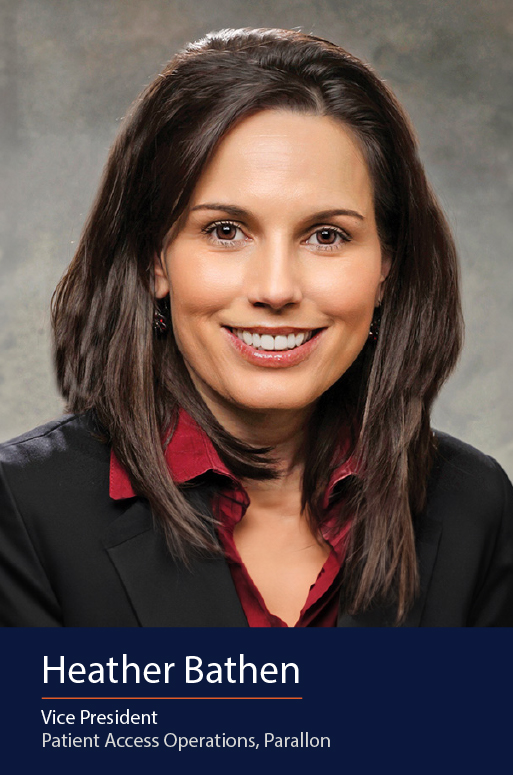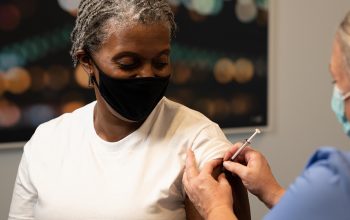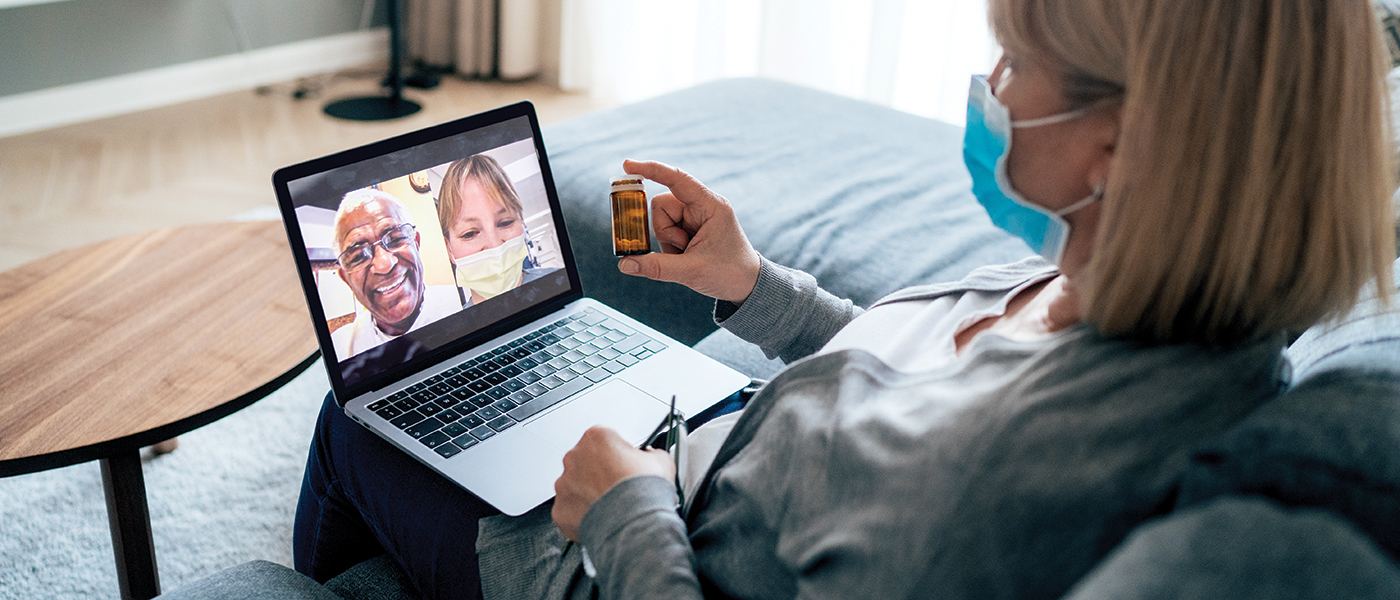Three new enterprise initiatives are making a difference in patient care.


Faced with disruption in the healthcare space, our decision-making continues to reflect our top priority: our patients. In order to deliver on HCA Healthcare’s mission and purpose, our leaders and service lines are embracing innovative thinking.
By employing new technologies on several critical fronts, HCA Healthcare is streamlining patients’ access to their care teams and to their medical information, thereby providing a better healthcare experience. Many of these improvements have also led to a better working environment for our colleagues.
1. Parallon exceeds expectations
As part of the HCA Healthcare family, Parallon is leading the way in three key emerging disciplines of the healthcare field — Virtual Registration, online registration and mammography self-scheduling.
“All of these disciplines work together to help achieve HCA Healthcare’s overall mission of committing to the care and improvement of human life,” says Anthony Knutson, chief operating officer, Parallon Contact Center.
Collectively, they prioritize both the improvement of the overall patient experience and the ease and accessibility with which patients can interact with healthcare providers, he explains.
All of these disciplines work together to help achieve HCA Healthcare’s overall mission of committing to the care and improvement of human life.— Anthony Knutson, chief operating officer, Parallon Contact Center
Virtual registration
Virtual Registration offers a contactless registration experience, allowing patients to provide required information at their own pace, in a secure manner, while maintaining the ability to connect with a registrar if assistance is needed, says Heather Bathen, vice president of Patient Access Operations at Parallon.
“We began using Virtual Registration in Florida prior to the COVID-19 public health emergency, primarily in free-standing emergency departments. We grew the program significantly during the pandemic to assist in minimizing the footprint of staff entering patient rooms,” says Heather. “Today, we have over 160 sites live and continue to grow.”
In July, Parallon began introducing Virtual Registration 3.0. That rollout will retrofit existing Virtual Registration sites with new technology and implement the program at new locations by the end of the year.
Some of the highlights of the program, developed with the direct input of patients and emergency department staff members, include:
- Easy-to-use front-facing cameras
- The ability to pause and resume registration without patients losing their place
- Self-sufficient experience with little to no action required by clinical staff
- Automatic introduction of new, improved versions to patient-facing iPads
- The leveraging of existing patient information to prevent repeatedly asking patients to provide medical history
- A help button for speaking to a registrar on demand for any questions or concerns
So far, patients have rated it a success — more than 90% have given it 5 out of 5 stars.

Online registration
Meanwhile, Register Online! gives patients a fast, easy way to complete the registration process at home or wherever they choose with their personal devices, prior to arriving at the hospital. That allows them to focus on their care and healing upon arrival at the hospital.
“As we continue to streamline our tool, we’re seeing more patients using it. This year alone, we’ve experienced an increase in utilization of nearly 14%,” says Heather. “We’re working to eliminate the need to ask patients more than once for information already provided — whether at a physician’s office or for a prior hospital service — using integration technology.
“Soon, we’ll be able to inform patients when they don’t need to pre-register, because we’ll already have the required information,” she says.
As we continue to streamline our tool, we’re seeing more patients using it. This year alone, we’ve experienced an increase in utilization of nearly 14%. We’re working to eliminate the need to ask patients more than once for information already provided — whether at a physician’s office or for a prior hospital service — using integration technology.— Heather Bathen, vice president, Patient Access Operations, Parallon
Mammography self-scheduling
Finally, patients can use the Mammography Self-Scheduling Tool to schedule screening appointments online at any time. The tool was implemented in May 2022, and more than 100 locations are using it this year.
Mammography self-scheduling is a win-win, directly benefiting facilities by allowing a higher volume of mammography screening services and improving the overall patient experience while benefiting patients by making appointment scheduling more accessible and more convenient.
“The overall response has been positive, and [it is] a welcomed modernization for scheduling a service so critical to women’s health,” says Anthony. “As patients provide feedback, the tool continues to be enhanced to provide the best user experience possible.”

HCA Healthcare’s new Mammography Self-Scheduling Tool allows patients to schedule screening appointments with technologist like Crystal Salazar of Southern Hills Hospital in Las Vegas, Nev. (left), online any time.
2. Staying informed with MyHealthONE
HCA Healthcare’s MyHealthONE portal empowers patients by providing complete access to their healthcare information, such as up-to-date medication details, visit summaries and billing records, as well as the ability to plan and review upcoming visits (including finding an appropriate physician or other specialist). The most popular features of MyHealthONE have been accessing health records, sharing records, secure messaging, preregistering online and ePay.
“It allows patients to receive their clinical information in an easy, timely manner that allows them either to make decisions based on their care or to share information with other providers, based on next steps of care,” says Allison Foulds, assistant vice president, MyHealthONE, HCA Healthcare. “It really puts the patient in the driver’s seat.
“The portal allows patients to be able to do the business of healthcare in the way that they do other business of their lives, and do it when it’s convenient for them, but also allows them to self-serve in a way that eliminates some of that reliance on some of our internal human resources,” she says.
HCA Healthcare launched the portal in response to Medicare and Medicaid “medical use” requirements, making sure that patients had access to their medical records or had the ability to access their digital medical records. While HCA Healthcare has had patient portals previously, they weren’t all connected.
MyHealthONE ensures that, for example, if a patient from Nashville, Tennessee, has to go the emergency room while visiting family in Florida, they can access their records after returning home using the same portal.
HCA Healthcare then launched a mobile app so patients can gain access at any time on their cellphones or tablets, enabling them to manage their healthcare in a way that’s convenient for them.
As of May this year, more than 8 million MyHealthONE accounts had been created in more than 500 locations, and the app had been downloaded more than 1.35 million times.
The reality is, this is the patient’s information. It gives them access to their own information.— Allison Foulds, assistant vice president, MyHealthONE, HCA Healthcare
“Most health systems, hospitals, use what’s called a tethered portal,” says Allison. “MyHealthONE is different in that we are an electronic medical-record-agnostic portal, which means that we have to do the development in order to integrate the clinical information into the portal, but it also gives us the ability to connect to multiple electronic medical records.
“For an organization like HCA Healthcare, where we have hospitals, and we have urgent care centers, and we have physician practices, which all have different electronic medical records, it’s a nice way to pull it all together for the patient,” she says.
The list of provider information available to patients through MyHealthONE is extensive and can include:
- History and physical notes: documentation of current and past conditions and findings from physical examinations of the patient
- Progress notes: ongoing records of a patient’s illnesses, diagnoses and treatments
- Consultations: notes prepared at the request of a physician for an opinion or advice about a patient’s condition from another physician
- Procedure notes: procedure and operative summary reports, including indications, post-procedure diagnosis, pertinent events and patient impact
- Discharge summaries: notes providing a synopsis of a patient’s admission to the hospital, including pertinent information for continuation of care following discharge
- Imaging reports: results of radiologist’s interpretation of image data
- Laboratory notes: comments regarding laboratory tests
- Pathology reports: the pathologist’s interpretation of tissue specimens
“The reality is, this is the patient’s information,” says Allison. “It gives them access to their own information.” Furthermore, patients can easily schedule appointments, using MyHealthONE to find the right provider at a nearby location; tour a hospital; or even take classes on a wide range of topics, such as prenatal and birthing care, first aid, stroke care and smoking cessation.
The portal also works hand-in-glove with the remote triage care that became popular during the pandemic and continues to be used throughout the enterprise.
“The thread that connects virtual nursing and MyHealthONE is really the idea that HCA Healthcare, with our scale, can provide excellent care and do it in a way that allows us to navigate this time when resources, particularly human resources, are harder and harder to come by,” says Allison.
3. Improving the in-room experience
For decades, bedside nurses have steadily taken on additional administrative duties. In the midst of staffing shortages, those added duties run the risk of overtaxing nurses. By eliminating many of the administrative tasks that nurses have become responsible for, HCA Healthcare is providing an environment where caregivers can concentrate on delivering hands-on patient care through using the Clinical Service Group’s in-room Virtual Care Model.
This virtual access to clinicians is designed to leverage technology to supplement the administrative tasks once done by bedside nurses. That reduced workload translates to improved working conditions for nurses, which in turn ensures superior care for patients.
“We’re starting with this virtual nursing pilot across multiple facilities so that we can best learn how to support our patients and our nurses,” says Susan McGory, vice president, Customer Relationship Management, HCA Healthcare.
Unlike the common interpretation of virtual nursing, or remote triage nursing, where patients connect with nurses and other caregivers via their computers, mobile devices or phones. The innovative in-room Virtual Care Model is designed to be used in the hospital room after patients are admitted.
It uses in-room televisions and cameras, allowing a virtual nurse, based at home, to interact with each patient within the facility. They cover the clerical details of admissions, document and verify medications, and handle discharge preparation.
“That really allows us to reduce the burden on that [bedside] nurse and increase patient satisfaction, because they’re able to spend more time with that individual nurse who is on that television screen asking some questions,” says Susan.
“We are taking our best practices and the lessons learned from that telephone triage and translating it into the facilities,” says Tabitha Anglea, MSN, RN, NEA-BC, AMB-BC, CCCTM, CCRN-K, LNC, assistant vice president, Customer Relationship Management, Clinical Operations, HCA Healthcare.
The program will also help HCA Healthcare facilities address other pressing issues, including recruitment and retention in med-surg and progressive care units. And it provides yet another career path for nurses who may no longer want to work bedside.
We’re starting with this virtual nursing pilot across multiple facilities so that we can best learn how to support our patients and our nurses.— Susan McGory, vice president, Customer Relationship Management, HCA Healthcare
The technology even allows family members outside the facility to connect to the virtual in-room session. If a patient speaks a different language, an interpreter can also connect to a patient’s room virtually to help with admission and discharge.
Additional responsibilities of the Virtual Care staff include conducting COVID-19 and vaccine screenings, reporting pertinent findings to the bedside nurse via secure text, and collaborating with bedside nurses and case management on discharge readiness.
Feedback gleaned from early pilots has been promising, revealing improvements in patient engagement, staff engagement and patient outcomes. Eventually, the goal is to establish the program across the enterprise.
“Because we’re learning in every new facility we go to, because we’re only in a handful right now, this is a real learning time for us to get through several pilots so that we do have those best practices and that standardization,” says Susan. “So when it comes time to scale, we can maximize it.”
Together, the teams at HCA Healthcare are facing the current healthcare landscape with courage, collaboration and innovation. These pillars mean high-quality patient care is never disrupted and our caregivers are always equipped.
Did You Know?
Parallon, HCA Healthcare’s full-service revenue cycle management provider, is an industry leader for healthcare revenue cycle management and shared services.
In partnership with Parallon, we have developed several programs and resources designed to provide support, including pricing information, financial counseling, patient-friendly billing practices and generous financial assistance programs.
Parallon’s long track record of operational excellence brings extensive knowledge and a broad portfolio of custom solutions to every collaboration.


